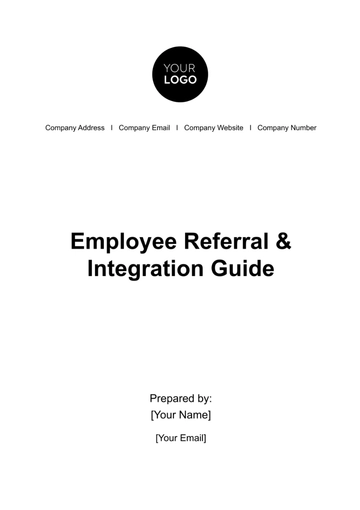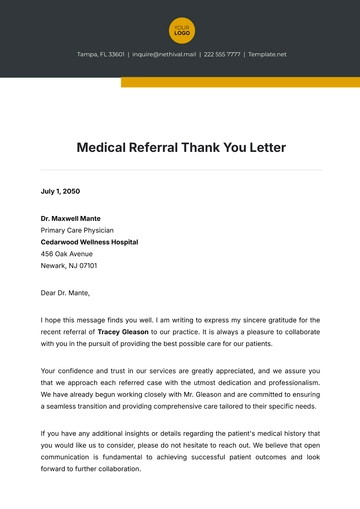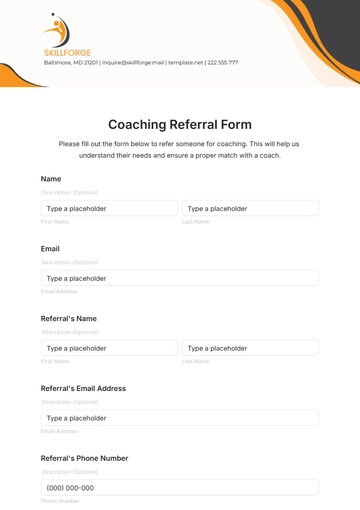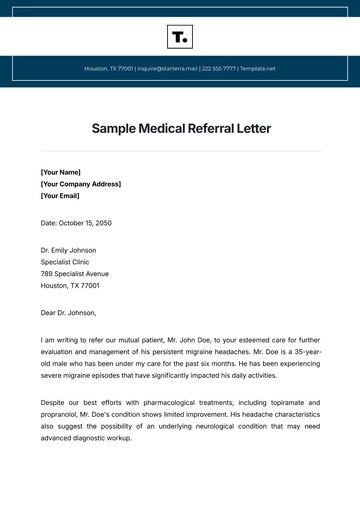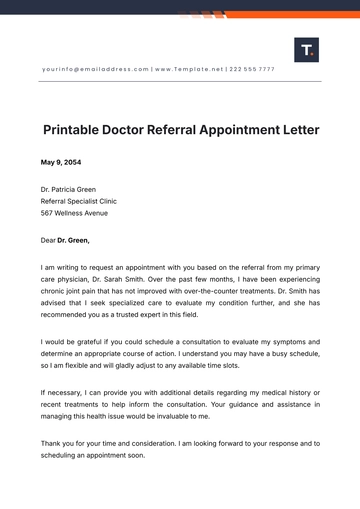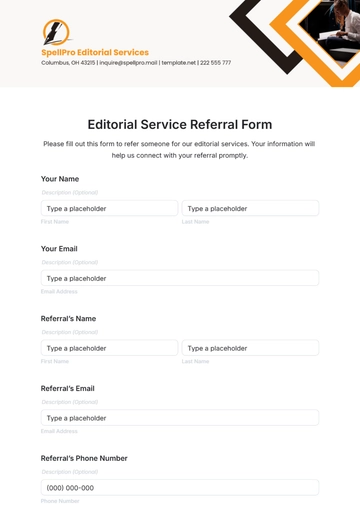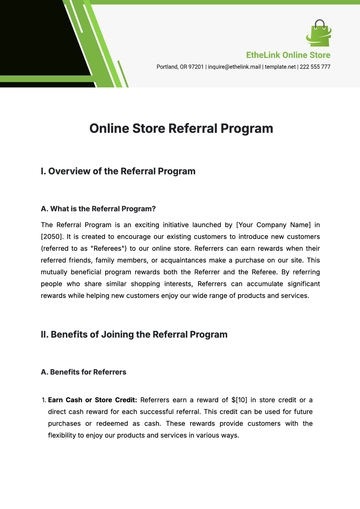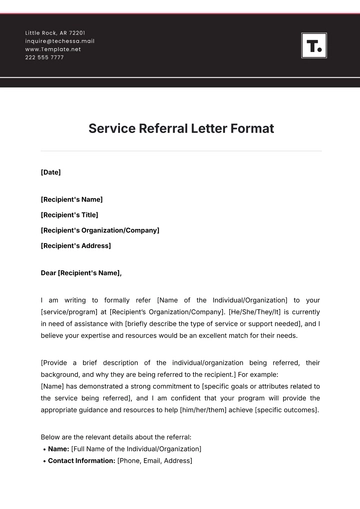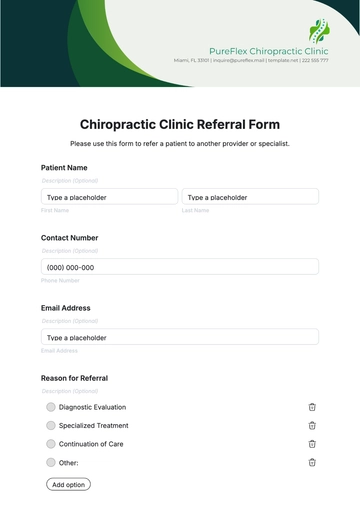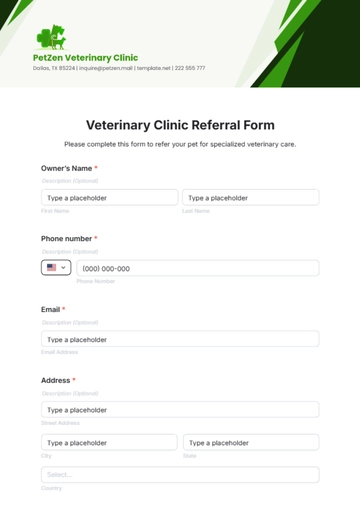Referral Protocol
Name: | [YOUR NAME] |
Company Name: | [YOUR COMPANY NAME] |
Department: | [YOUR DEPARTMENT] |
Date: | [DATE] |
1. Introduction
This Referral Protocol aims to establish a structured framework for healthcare professionals to refer individuals or cases from one entity to another for additional assistance, evaluation, or treatment. By adhering to this protocol, nurses can facilitate seamless communication and coordination among involved parties, ensuring efficient and effective transitions of care while prioritizing the needs and well-being of the individuals being referred.
2. Purpose
The purpose of this protocol is to:
Provide guidelines for nurses to initiate and manage referrals effectively.
Ensure timely and appropriate communication between referring and receiving entities.
Enhance collaboration and continuity of care for individuals requiring additional assistance, evaluation, or treatment.
3. Scope
This protocol applies to all healthcare settings where referrals are made, including but not limited to hospitals, clinics, community health centers, and long-term care facilities. It encompasses referrals for various reasons, including medical, surgical, psychological, and social needs.
4. Referral Process
4.1. Identification of Referral Need: Nurses must identify the need for a referral based on assessment findings, patient history, and individual care plans. This may involve recognizing symptoms or conditions that require specialized expertise beyond the nurse's scope of practice.
4.2. Consultation with Interdisciplinary Team: Before initiating a referral, nurses should consult with the interdisciplinary team to ensure a comprehensive understanding of the individual's needs and goals of care. Input from physicians, social workers, therapists, and other healthcare professionals can inform the referral decision.
4.3. Documentation: Accurate and detailed documentation of the referral process is essential. Nurses must document the reason for referral, relevant clinical information, communication with the individual and family, and any actions taken.
4.4. Communication with Receiving Entity: Nurses are responsible for communicating referral details to the receiving entity promptly and accurately. This includes transmitting essential clinical information, scheduling appointments, and providing necessary follow-up instructions.
4.5. Monitoring and Follow-up: Following the referral, nurses should monitor the individual's progress and facilitate communication between the referring and receiving entities as needed. Timely follow-up ensures continuity of care and addresses any emerging issues or concerns.
5. Responsibilities
5.1. Nurse
Identify the need for referral based on assessment and consultation with the interdisciplinary team.
Document referral details accurately and comprehensively.
Communicate effectively with the receiving entity and facilitate the referral process.
Monitor the individual's progress and provide follow-up as necessary.
5.2. Interdisciplinary Team
Provide input and guidance in the referral decision-making process.
Collaborate with nurses to ensure a comprehensive understanding of the individual's needs.
Assist in coordinating care and support during the referral process.
Participate in monitoring and follow-up activities post-referral.
6. Conclusion
This Referral Protocol serves as a guide for nurses to establish a structured framework for referring individuals or cases for additional assistance, evaluation, or treatment. By adhering to this protocol, healthcare professionals can ensure seamless communication, collaboration, and continuity of care, ultimately enhancing the well-being of individuals under their care.
Protocol Templates @ Template.net


